Bout of Books 33 reading round-up
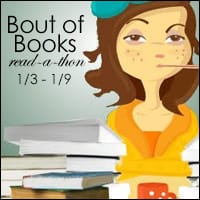
In all the excitement of the new year and my birthday, I almost didn’t realise there was a Bout of Books readathon last week. Thankfully, I spotted some Tweets on Tuesday morning and decided to join in, albeit a day late. It seemed like odd timing to me initially, but on reflection it was the perfect way to start the year.
Bout of Books is a week-long readathon held three times a year. It was started in 2011 by Amanda Shofner, who still co-hosts, and has a wide community, from those who consider themselves bookstagrammers, booktubers or book bloggers, to people who just like to chat about books on Twitter and other social media. It really feels like you’re part of an event when you’re seeing lots of updates on the #BoutOfBooks hashtag and having live conversations with fellow book lovers.
As well as encouraging us to carve out time to read every day, Bout of Books is distinguished by half-hour reading sprints three times a day. As it’s US-based and I was working full time Tuesday to Friday, these didn’t fall at super helpful times for me in the UK but I did like that there was a sprint every day at 11 p.m. GMT, encouraging me to switch off the TV (if it had been on) and read for my last half hour before bed. It slotted perfectly into my routine, and I think I slept unusually well last week so I’ve tried to maintain the habit even after the readathon ended.
2022 has so far been mostly wet and grey, and going back to work after all the excitement of Christmas is always a little sad, so it would have been very tempting to just stare at the TV every night last week. I am so glad that instead I curled up with a book (and usually the dog). I tore through books from the TBR and I felt a bit more positive about myself. Plus reading itself is a good time, which you wouldn’t think I’d need reminding of, but that TV is such an easy temptation.
As I tore through them so quickly I’m not sure I’ll manage to write in-depth reviews of the four books I finished during the readathon, so here are some short reviews of them all.
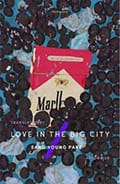 Love in the Big City
Love in the Big City
by Sang Young Park
translated from Korean by Anton Hur
This is meta fiction, inspired by people and events in the author’s own life, with a narrator called Young Park, but still fiction. It opens with Young in his 20s, sharing an apartment with his best friend Jaehee in Seoul, living life to the full. They drink, they sleep with lots of men, they flit from one job to the next. Some people frown on an unmarried man and woman living together, but Young and Jaehee figure it’s fine as he’s gay (though not technically out). They’re having a grand time until Jaehee falls in love with one of her beaus and everything has to change.
“In those days, we learned a little bit about what it was like to live as other people. Jaehee learned that living as a gay was sometimes truly shitty, and I learned that living as a woman wasn’t much better. And our conversations always ended with the same questions:
– Why were we born this way?
– Who knows?”
The jump to Young’s life in the next section is so big that at first I wondered if it was a different character. Most of his time and energy is spent nursing his sick mother, he experiences his first love and his first heartbreak. As he gets older, his problems get bigger but he also becomes more sure of himself, of who he is.
I really liked this book. Park is entertaining and lyrical when dealing with both frivolous and serious matters. He injects humour into sad moments but also includes introspection and reflection. I’ll definitely look out this author again.
Translation published 2021 by Tilted Axis Press.
Source: Storysmith, Bristol
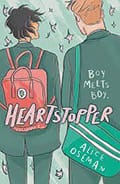 Heartstopper volumes 1 and 2
Heartstopper volumes 1 and 2
by Alice Oseman
A couple of years ago every time I opened Instagram I saw these Heartstopper comics. They were beloved and I was intrigued. They’re about a young gay couple at secondary school and started life as a spinoff from Oseman’s debut novel Solitaire, in which the couple are minor characters.
Two things surprised me on finally getting to read the first two books in the comic series. First was that Oseman and her characters are British (for some reason I had assumed that a YA sensation must be American). Second was the lettering, which is hand drawn in quite a large, rough style. I guess this is why big comic companies usually employ separate people for lettering, artwork, colouring, inking.
But once I got used to those things, I completely relaxed into this sweet, charming story. It’s clear from the start (indeed, from the cover) which two boys are going to get together, so it’s hardly a surprise when it happens. The point, though, is how they get there. Oseman’s art gives space for the simple story to breathe, with details of the changing seasons as well as the more obvious stuff such as facial expressions.
Heartstopper has been running as a webcomic since 2016 and is still going. A year ago a Netflix adaptation was announced, and apparently production wrapped last November, so it should be on our screens soon. This seems like it could make a great TV show, and I hope they maintain the sweet and light tone.
Volume 1 first published as a Kickstarter in 2018. This edition published 2019 by Hodder & Stoughton. Volume 2 published 2019 by Hodder & Stoughton.
Source: Borrowed from a friend.
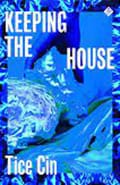 Keeping the House
Keeping the House
by Tice Cin
This novel is about drug dealers in North London, centring around a Turkish Cypriot family. Three generations of women, and some of the men around them, narrate this tale of complex family and community dynamics. They are Makbule, who moved to London from Cyprus after losing her home, her husband and her sons to war; Ayla, who is separated from the love of her life by his drug addiction; and Damla, born in 1991 and still figuring out life while her mother and grandmother keep her world afloat.
The narrative covers around 12 years, but it centres around one deal that Ayla makes with the local drug dealers she knows. She doesn’t know how to sell the heroin her boyfriend left behind when he went to jail, but she does have an idea for how to smuggle more in from Cyprus – inside cabbages. Which her mother taught her how to grow.
This central ruse is funny and original, and it’s interesting to see it move from confused conversations about technical details to a crime caper across Europe. I also really like the way the book deals with the language spoken by its characters. As you might expect, they speak English with Cockney-accented inflections, peppered with words and phrases in Turkish (or sometimes Turkish Cypriot, or Kurmanji). These words are included as the character has said them, but then in tiny letters alongside is the translation, and in the margin is the language. It’s a lovely way to accurately depict the argot, keep the reader informed, and remain typographically attractive.
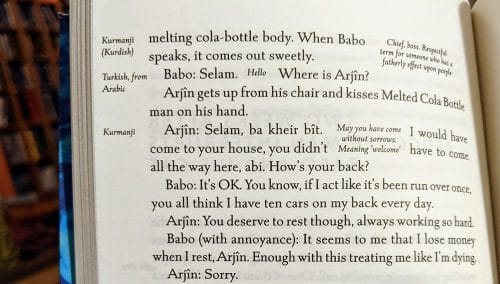
I really liked the characters of the three lead women, but I found the novel a little too stylized, feeling like I was having to guess what was happening half the time. It also seemed to fizzle out a bit after the big drug deal at its centre, with the last third or so of the book rushing through Damla’s adolescence without having anything else driving it along.
Published 2021 by And Other Stories.
Source: I was a subscriber to the publisher.